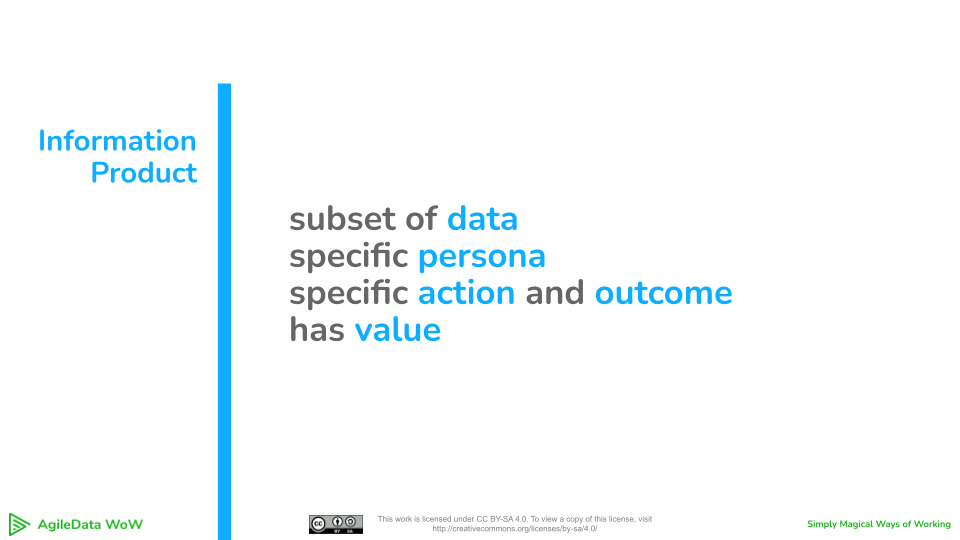Information Product Vs Information Product Canvas
The Information Product is the thing you build and deploy, the Information Product Canvas is a pattern template that helps you with that data work
TL:DR
The Information Product is the thing you build and deploy, the Information Product Canvas is a pattern template that helps you with that data work.
Often people ask me what is the difference between an Information Product and the Information Product Canvas.
What is an Information Product
First lets define what an Information Product is.
There are lots of different definitions for what a Data Product is. In fact most people use the term Data Product, not Information Product, but that is another post.
This is what I use and teach as the definition of an Information Product.
At the core an Information Product provides the context for a boundary.
I provide a second definition to reinforce the fact that an Information Product defines a boundary.
An Information Product should provide a subset of data, so it can’t be the entire Data Warehouse.
For example Customer Churn data
It has to be targeted at a group of personas, who is it actually designed to be used by?
For example the Chief Revenue Officer, or the RevOps team or a Product Manager
It has to drive specific actions, and those actions should drive a business outcome.
For example we will send out a discount offer to those customers indicating they will churn, which will reduce the number of customers churning
And that outcome should result in some business value.
For example, the reduction in customer churn will result in in $500k of revenue retention
If we don’t get value from the Information Product, why would we invest in the cost and time to build it when we can build a different one that adds business value.
Another way I describe what an Information Product is liking it to the apps on my phone.
Each one of these apps has a boundary for the data, persona, action and outcome.
When I email I am using textual data, I use it with my work hat on, the action is to communicate with external people (we don’t use email to communicate internally within AgileData), the outcome is more customers.
When I use Slack I am using textual data, I use it with my work hat on , the action is to communicate with both our internal team and our partners, lots of different outcomes for this one.
When I use Xero, I am using financial data, I use it with my work hat on, action is to check the financial health of the business, outcome is we can pay our bills.
When I use Candy Crush, I am using gaming data, with my personal hat on, the action is playing the game on my own, the outcome is relaxation (or is it actually a sense of achievement, interesting question).
What is the Information Product Canvas
This is what I use and teach as the definition of an Information Product Canvas.
It is a pattern template, an output that we populate to create the initial definition for an Information Product.
It allows us to capture the data and information requirements in less than 30 minutes.
Multiple people should be able to complete the Canvas and in doing so the format of those requirements should be consistent.
The pattern storming process we use to complete the Canvas with the stakeholder should be something the stakeholder enjoys, or at the least doesn’t hate with a passion.
And last but not least the Canvas should be valuable and used in the next steps in your Information Value Stream.
What is the value of Information Product Canvas
The Information Product Canvas provides us with a Shared Language.
It allows the many different people and personas that are involved in the identification of a problem through to the delivery of an Information Product that helps solve that problem to have a shared language.
They can use that language to agree what the Information Product is and why it should be created, maintained and enhanced.
Why should we build that particular product next, what value will it deliver.
The last word
The Information Product is the thing you build and deploy, the Information Product Canvas is a pattern template that helps you with that data work.








